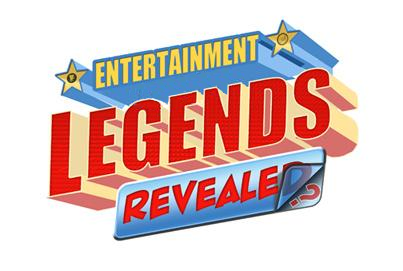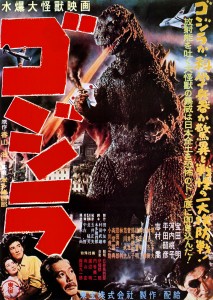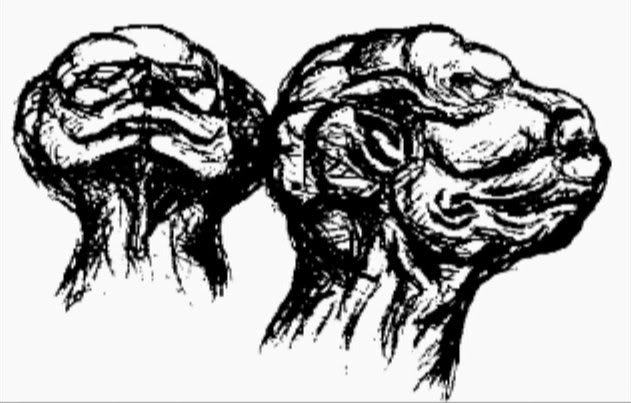Was Godzilla Originally Going to be a Giant Octopus?
Here is the latest in a series of examinations into urban legends about movies and whether they are true or false. Click here to view an archive of the movie urban legends featured so far.
MOVIE URBAN LEGEND: Godzilla was originally going to be a giant octopus.
When Gohira (later Anglicized to Godzilla) was first released in Japan in 1954, it was to a country just nine years removed from the nuclear bomb destruction of Hiroshima and Nagasaki (and the non-nuclear leveling of Tokyo by Allied bombing attacks). Therefore, the idea of nuclear radiation forming a giant monster to terrorize Tokyo once again had a much different connotation in Japan sixty years ago than it does today. The general theme of the film was that nature (through Godzilla) was getting revenge against mankind for daring to create and use nuclear weapons. That approach has mostly been de-emphasized over the years. One thing that has stayed consistent for the most part, though, has been Godzilla’s basic appearance (besides some slight alterations here and there, including different coloring in different films). Since his debut, Godzilla has remained a scaly dinosaur-like creature (the scales themselves were meant to evoke the radiation scars that the survivors of Hiroshima and Nagasaki had). However, that was not the original plan for what Godzilla would like. Was Godzilla really originally supposed to be a giant octopus?
The key thing to remember about the first Godzilla film is that it was very much put together in a hurry. You see, originally, the producer of the film, Tomoyuki Tanaka, was working on an entirely different film for Toho Productions all together. It was called In The Shadow of Honor and it was about a Japanese soldier fighting in Indonesia as part of that country’s independence from the Netherlands after World War II. The film was a joint production with Indonesia’s government-owned film company. Senkichi Tamaguchi was the director in the project. Things were going well in February of 1954 as casting had already begun but in early March the Indonesia government let Tanaka know that the film had to be delayed due to poor weather in Indonesia. At the very end of March, he was contacted again and informed that the project had been canceled entirely. Tanaka intended to fly to Indonesia to try to get the project back on its feet, but a top executive at Toho, Iwao Mori, said forget about it, just do a different movie. Tanaka has later said that he was reading a newspaper article on a flight back to Japan from Indonesia about the Lucky Dragon 5 incident when he was inspired for what his new film would be about. The Lucky Dragon 5 was a Japanese fishing boat that was operating near the Bikini Atoll when the U.S. Government was testing out a thermonuclear bomb on March 1, 1954. The explosion was larger than expected and people in so-called “safe zones” were not, and that included the Lucky Dragon 5. The ship’s crew suffered from radiation exposure and one member even died from radiation poisoning.
With this idea combined with the release of the recent American science fiction film, The Beast from 20,000 Fathoms, about a hibernating dinosaur awakened by a nuclear bomb testing, Tanaka had his basic idea for a film. However, that was all the specifics that he had for the film – giant monster created by nuclear bomb testing. The first draft of the screenplay, “The Giant Monster from 20,000 Leagues Under the Sea,” reflects that no one was sure exactly WHAT the monster was going to be – just that it was a giant monster. The project was soon dubbed “Project G,” for “Giant.” Ishirō Honda stepped in as director after the original director, Senkichi Tamaguchi, moved on to another project after In the Shadow of Honor fell through.
A number of ideas were then poured over throughout April and May of 1954. The obvious idea would have been to just do a dinosaur-like creature just like The Beast from 20,000 Fathoms, but it seems as though that Tanaka initially wanted to shy away from taking TOO much from that earlier film. When he was hired to do the story for the film, Shigeru Kayama recalls that the monster was meant to be a sea creature, a cross between a whale and a gorilla. And sure enough, Gohira is, indeed, a combination of the Japense words for gorira (gorilla) and kujira (whale). While the recent success of the original King Kong (which had just recently been re-released internationally in 1952) was a major influence, by looking at the various takes on the development of the monster it seems like Gorilla-Whale was more of a reference to how BIG the creature was supposed to be rather than a specific description of a mix between a whale and a gorilla. Some early versions of the design for Godzilla even included a mushroom-like head to make the whole “nuclear fallout” aspect even clearer.
However, the special effects designer for the film, Eiji Tsuburaya, wanted the monster to be a giant octopus, based on a story that he had written the previous year in response to King Kong. Eventually, with no one quite positive what the monster should be, Tanaka decided to just go with the most obvious idea and make Gohira a giant dinosaur-like creature.
Time constraints played a major role in the look of Gohira, as well, as Tanaka would have preferred to use the stop-motion animation approach of The Beast from 20,000 Fathoms but that would be too time-consuming and production was set to begin in August and be ready for release in November, so they ended up going with the approach of using a stuntman in a suit with a small scale model made up of Tokyo.
So I don’t think it is fair to say that there ever was an “original” design for Godzilla, so I’m going with the legend as…
STATUS: False (but with major True aspects mixed in)
Feel free (heck, I implore you!) to write in with your suggestions for future installments! My e-mail address is bcronin@legendsrevealed.com.








I thought you said Godzilla is a giant puss.
Go-ji-ra, not Go-hi-ra. It’s spelled phonetically using katakana right there in the poster. I think you have it confused with the Spanish musical style “Guajira”.
Gabbar’s right — it’s Gojira in the currently preferred romanization scheme. In the romanization scheme that was common in the ’50s, though, the same syllables would be transliterated as Go-zi-la or Go-dzi-la (since the second consonant is pronounced sort of halfway between J and Z while the third is halfway between L and R). That’s where the “Godzilla” spelling came from, with the second L perhaps being there to clarify the pronunciation, or perhaps because of the “gorilla” component of the name’s origin.